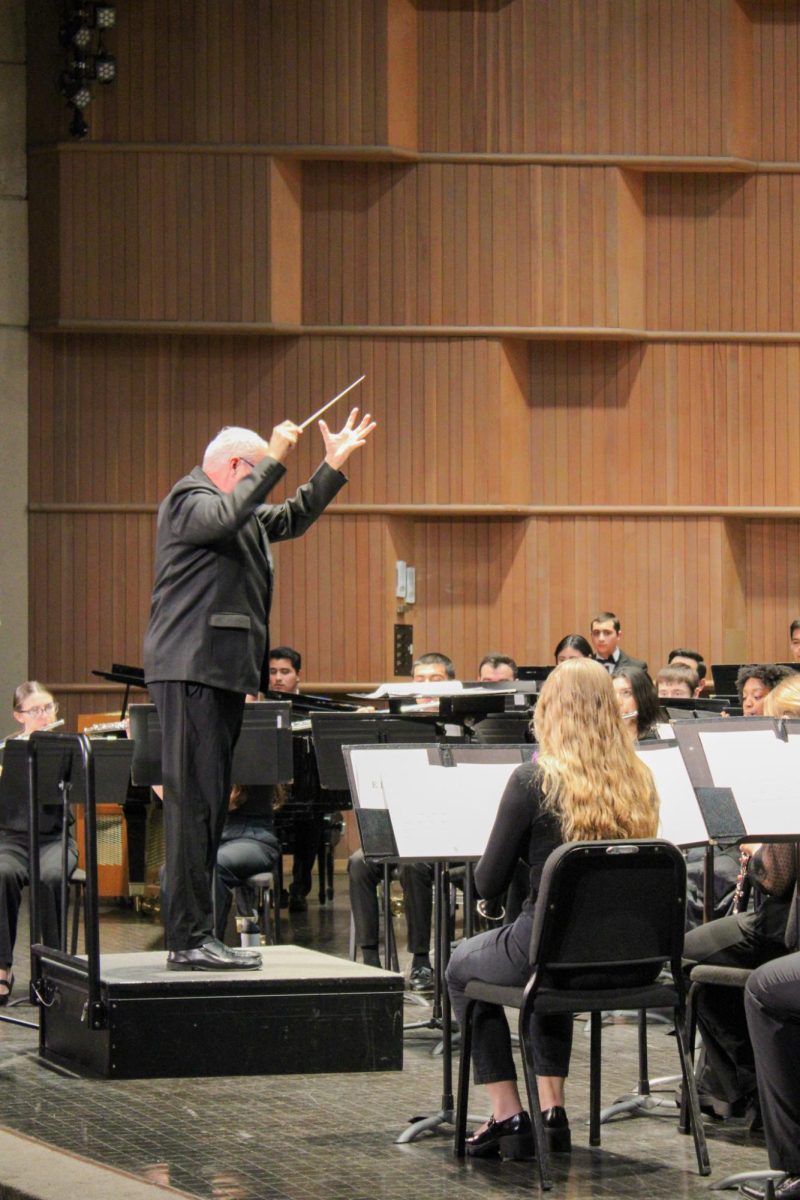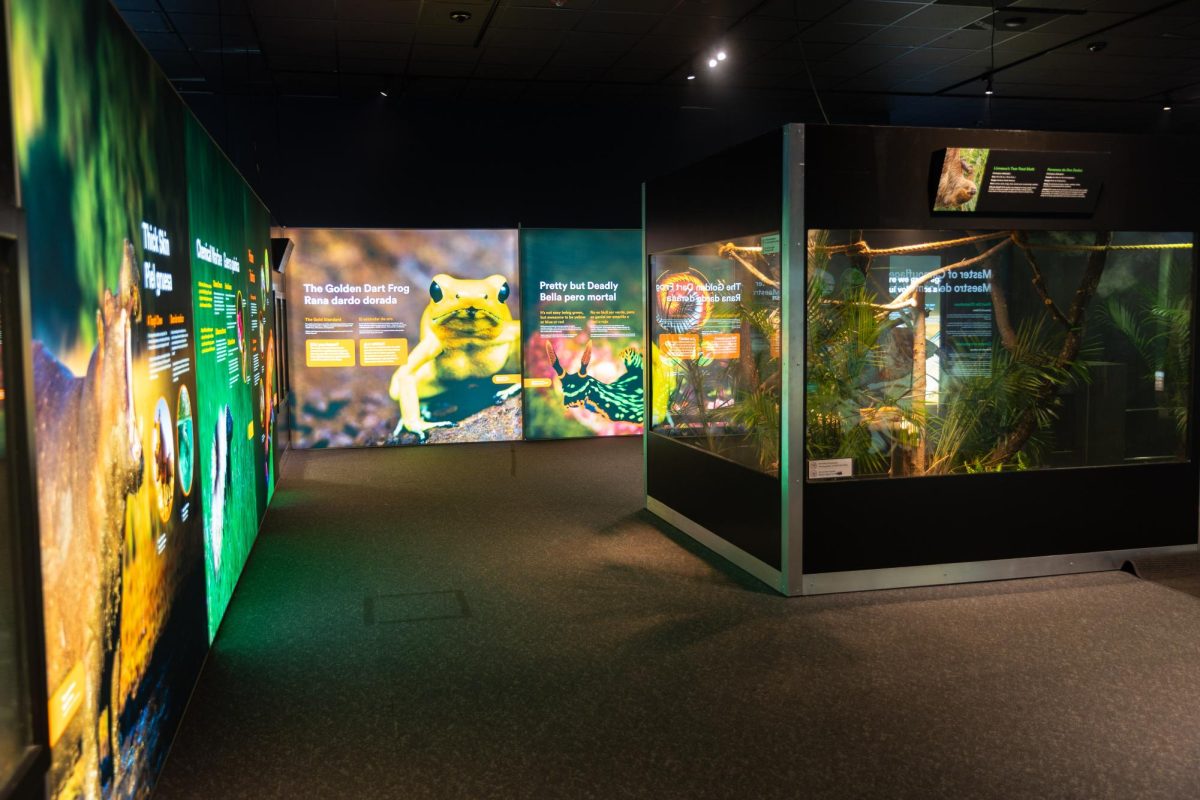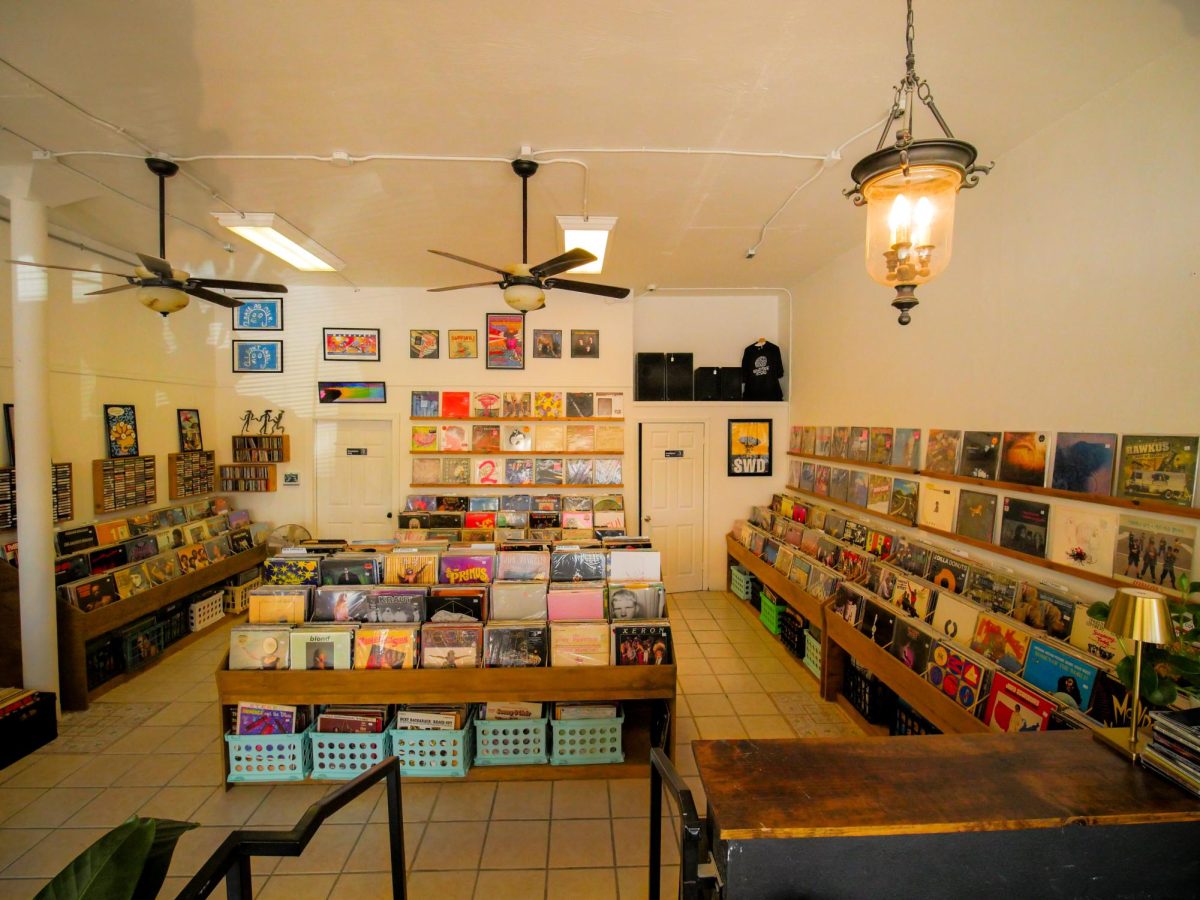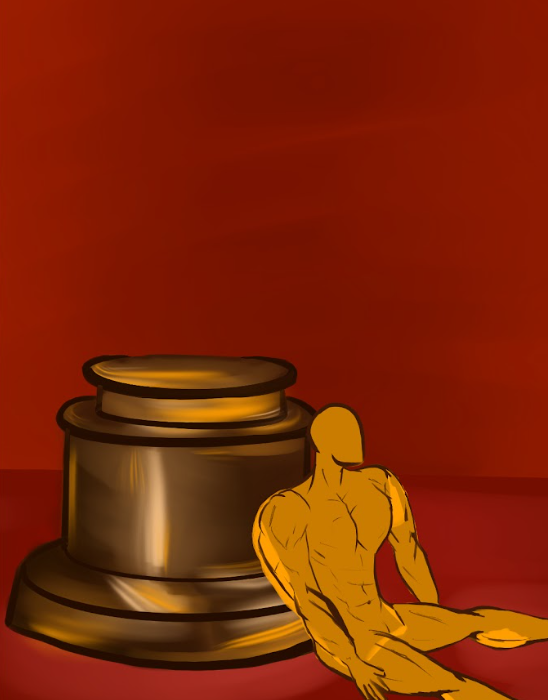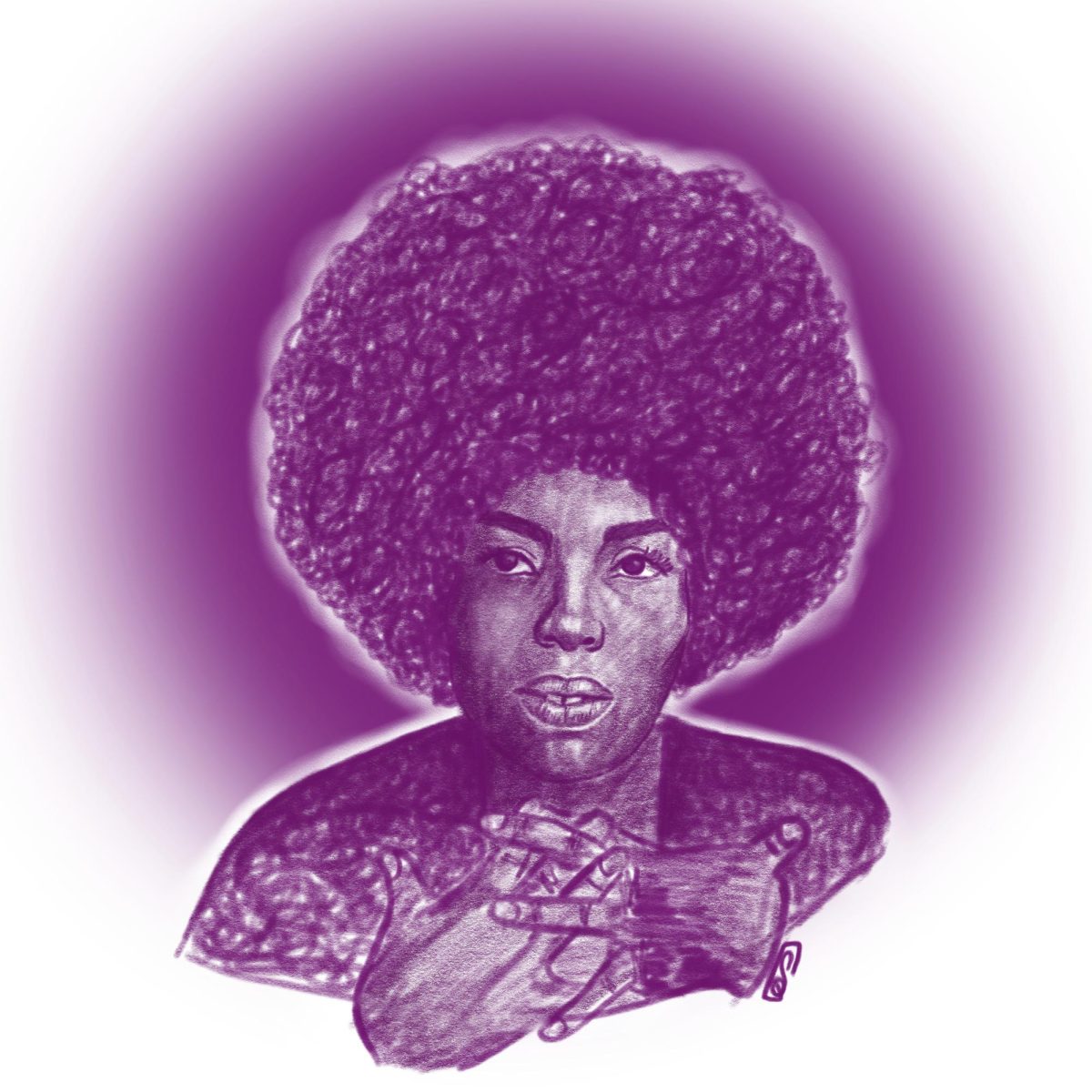_luisa_wheeler_exhibit_(jennifer)__gallery.jpg)
Jennifer Alejos / The Paisano
Focusing mainly on Latin culture, Wheeler’s work has shifted from painting to film and now to photography. Currently, she has a small exhibit at The Institute of Texan Cultures, which is part of the Institute’s Contemporary Artists Series. The pieces on display at the exhibit speak volumes: one shows a father and son, solemn in their work as firefighters, with the Virgin de Guadalupe separating the two and another depicts a gardener holding a hoe, proud in his work. All of the works are in black and white.
Born in Eagle Pass, Texas and raised in Piedras Negras, Mexico, Luisa Wheeler now sits in a chair that almost envelops her. She is a small woman, with powerful eyes, and her confidence moves through the air as she moves. She quickly glances at her photography — her art —adorning the white walls of her studio and then looks at the coffee she is drinking.
“To me, whenever I think about my childhood I always think about black and white photographs. And I wanted [these men] to represent my father,” Wheeler explains. “I shot ten photos of men [in their] professions — humble professions. I shot a doctor, a lawyer, a waiter, a priest, a carpenter and a construction worker.”
Wheeler cites her father as the main source of inspiration for her work and she is more than eager to discuss him.
“Everybody knew him, and he was so good looking! He was my inspiration because he was a hardworking man. He was always [working] to make the house bigger and for us to have a future,” says Wheeler as she fondly reminisces. “He set a very good example and I’m very thankful.”
In addition to the pieces hanging from the wall in the Contemporary Artist Exhibit, there is a sculpture: a chair made of many ties. Wheeler explains that the chair belonged to her husband’s mother and represents the ties belonged to her husband’s father.
“To me [the sculpture] means a mother’s chair… it tells everything about a family — about a father, a mother, a son.”
Family within Latin culture is a consistent theme for Wheeler, and she explains that in the past her most powerful work has always incorporated the theme of family.
“I had a series of [exhibitions] in the past, and I went to my hometown to photograph women and their children,” explains Wheeler as she describes a past exhibit. “My photograph was of a lady holding a baby with a clothesline in the background. She was a very humble lady, but she was so proud of her environment.”
Pride is another theme that Wheeler tries to incorporate into her work. While facing prejudice, racism, poverty and crime, Latinos have had to suffer much throughout their history, but the people have always maintained a sense of pride and self-respect.
“That is also what I want to capture: pride,” explains Wheeler. “People that are humble — people that don’t have much — but they are so proud of themselves.”
It is because of this pride that Wheeler has made such a impression on the art world.
She begins to describe her life as it led up to her becoming the artist she is today.
“I did everything backwards!” Wheeler recalls. “I got married when I was eighteen; I had children and raised them. I started my education when I was thirty-six!”
Wheeler describes getting her Associates degree in Eagle Pass and then commuting to San Antonio twice a week in order to obtain her Bachelor’s degree and then her Masters in Fine Arts from UTSA.
“I always wanted an education, and when you go to school [for art], they want you to change your style. I did not want to change my style,” Wheeler declares, laughing at the thought of it. “I studied photography and printmaking for my undergrad; I [always wanted] to do something related to art.”
She also recalls the difficulties that she faced obtaining her education while raising her children.
“I was on food stamps, because I was in school,” Wheeler recalls, “and my sister or sister-in-law would help me with my daughters.”
“I remember getting a grant to Italy,” she remembers as she squints her eyes with concentration, “I went to the food stamp person — you have to tell the truth — and I said I was going to Italy!”
Italy is not the only place Wheeler has been able to travel. She has also been able to venture all over the world: Berlin, Germany, Mexico City, Mexico and Barcelona, Spain. “I had the first-ever exhibit in Piedras Negras… I have also shown in Saltillo, Torreon, Italy.” All of this is said with pride, as Wheeler rises from her chair and starts discussing the works in her studio — a studio that also doubles as her home.
She starts to explain a piece that was displayed during La Cantera’s Fashion Week last year, over there is a photograph that was taken on a spur-of-the-moment trip to Italy. There is an unfinished mosaic in the bathroom. “I’ve been meaning to finish that!” All throughout the house are works that have sentimental value, blending two elements that have always gone hand in hand within the art world.
“I was little when I found out that I was an artist,” Wheeler recalls, as the journey around the studio-home concludes. “We were playing outside and I saw this white wall. I just couldn’t stand it, it was so empty… A blank canvas! So I grabbed some chalk or a crayon and did a scribble.” Laughing, she describes what happens next. “When my father got back home from work he was shocked. He called everybody and asked us who did the scribble. I was the first one to jump up and say, ‘I didn’t paint that eagle!’
Luisa Wheeler’s exhibit as part of the Contemporary Artists Series at The Institute of Texan Culture will continue until May 3, 2013.


